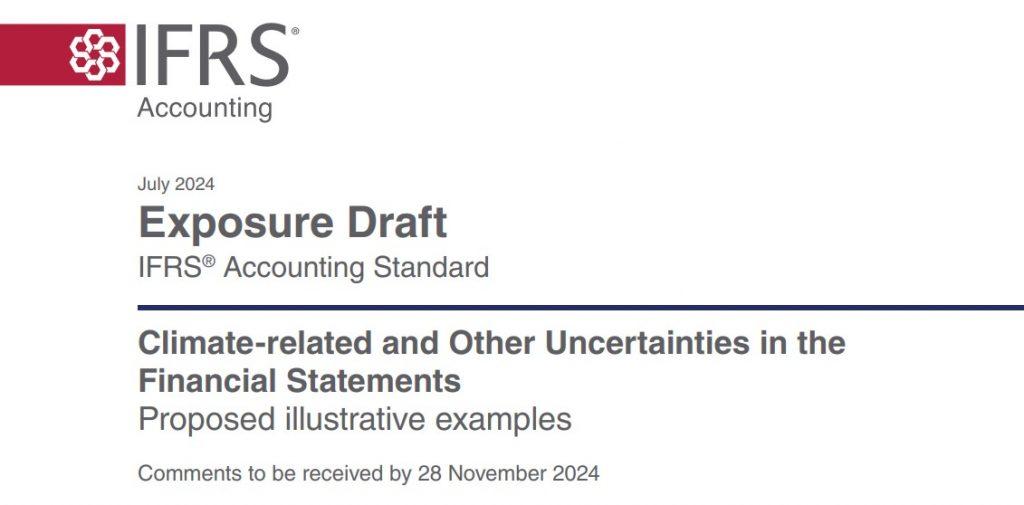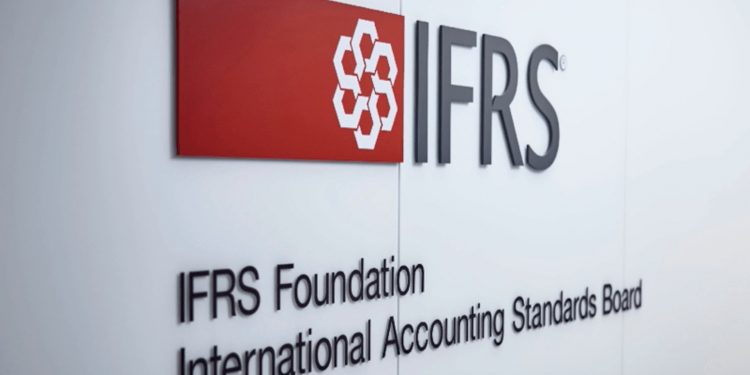Draft on Climate Disclosure in Financial Statements
The International Accounting Standards Board (IASB) releases a draft on climate disclosure in financial statements, aiming to provide guidance for companies in preparing financial statements.
In June 2023, the International Sustainability Standards Board (ISSB) released the Climate-related Sustainability Disclosure Standards (IFRS S2), requiring companies to disclose climate information in their financial statements. The IASB and ISSB have collaborated to release the draft for soliciting opinions, as well as providing companies with some disclosure examples.
Related Post: Deep Dive on IFRS Climate Related Sustainable Disclosure Standards

Example 1: Materiality Judgments Leading to Additional Disclosures
This example illustrates how companies make materiality judgments based on International Accounting Standard 1 Presentation of Financial Statements, which may require additional information disclosure.
For example, companies engaged in capital intensive industries face climate related transition risks. In order to manage these risks, companies have developed climate transition plans and disclosed about the plans in their general financial reports. The enterprise is preparing to invest in energy-saving technologies and change product production methods to reduce carbon emissions, but believes that the transition plan has no impact on its assets, liabilities, and income expenditures. The information source for the enterprise to make this judgment is:
- The affected manufacturing equipment has been fully depreciated.
- The recoverable amount of cash generating units affected by the enterprise far exceeds its carrying value.
- The enterprise has no asset retirement obligations.
Example 2: Materiality Judgments not Leading to Additional Disclosures
This example illustrates how a company makes material judgments based on International Accounting Standard 1 Presentation of Financial Statements, which may not result in additional information disclosure.
For example, a company is a service provider whose industry is limited by the impact of climate risks. The company discloses in its general financial report that its greenhouse gas emissions are low and plans to maintain its current emission policies by introducing renewable energy to avoid high carbon emissions. The company did not disclose information on climate transition risks in its general financial reports. When preparing financial statements, the company assessed that emission policies have no specific impact on the financial accounts.
Example 3: Disclosure of Assumptions: Specific Requirements
This example illustrates how a company discloses key assumptions regarding the recoverable amount of assets in accordance with International Accounting Standard 36 Impairment of Assets.
For example, a company’s operation generates a large amount of greenhouse gas emissions, the jurisdiction where the company is located requires the company to pay for a portion of the emissions, resulting in emission costs. The company has allocated goodwill to a cash generating unit and conducts impairment testing on it annually. The key assumption for enterprises to confirm future emission costs is the recoverable amount of assets. The company disclosed its future price assumptions and regulatory scope for carbon emissions, as well as the methods used to determine these key assumptions.
Example 4: Disclosure of Assumptions: General Requirements
This example illustrates how a company discloses basic information about assumptions in accordance with International Accounting Standard 1 Presentation of Financial Statements.
For example, companies in capital intensive industries are facing climate transition risks. During the reporting period, some non current assets of the company have been impaired. The company conducts impairment tests on its cash generating units and determines that the recoverable amount of the cash generating units is greater than their carrying value. Therefore, no impairment losses are recognized. When confirming the recoverable amount, the company considers the development of future regulatory policies, consumer demand, product prices, and carbon emission costs.
Example 5: Disclosure of Assumptions: Additional Disclosures
This example illustrates how a company discloses additional disclosures that are not required by International Accounting Standard 1 Presentation of Financial Statements.
For example, the jurisdiction where the enterprise is located has announced a policy restricting its operations, which is unrelated to taxation but may affect the profitability of the enterprise, thereby affecting its ability to recover the carrying value of deferred tax assets. However, the policy has not yet taken effect. The enterprise believes that it needs to recognize deferred tax assets and assumes that policy implementation may result in significant write downs of deferred tax assets.
Example 6 Credit Risk Disclosure
This example illustrates how a company discloses its credit risk exposure and credit risk management practices in accordance with International Accounting Standard 7 Financial Instruments: Disclosures.
For example, as a financial institution, a company needs to confirm the impact of climate related risks on its credit risk exposure as part of its credit risk management practices. The company has identified two loan portfolios, namely:
- Loans provided to agricultural clients, but drought may affect their repayment ability.
- Mortgage provided to clients in the real estate industry, but properties are susceptible to flood risks.
Considering the scale of the impact of climate risk on the loan portfolio and the development of climate related policies, the enterprise believes that both loan portfolios face material climate risk, and therefore makes disclosures.
Reference:
IASB Proposes Illustrative Examples to Improve Reporting of Climate-related and Other Uncertainties in Financial Statements
ESG Advertisements Contact:todayesg@gmail.com








